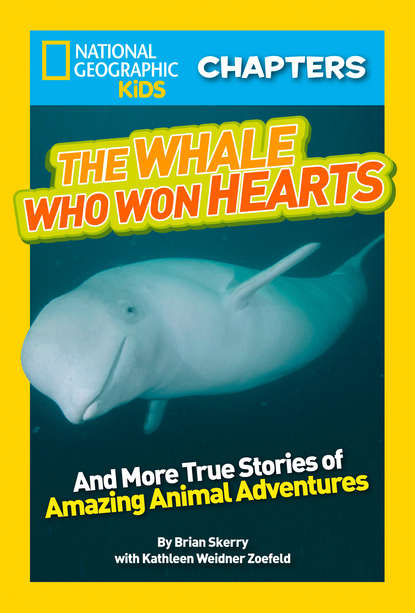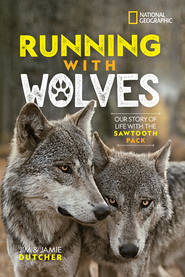По всем вопросам обращайтесь на: info@litportal.ru
(©) 2003-2024.
✖
National Geographic Kids Chapters: The Whale Who Won Hearts: And More True Stories of Adventures with Animals
Автор
Год написания книги
2019
Настройки чтения
Размер шрифта
Высота строк
Поля
For rights or permissions inquiries, please contact National Geographic Books Subsidiary Rights: ngbookrights@ngs.org (mailto:ngbookrights@ngs.org)
Trade paperback ISBN:
978-1-4263-1520-6
Reinforced library edition ISBN:
978-1-4263-1521-3
eBook ISBN: 978-1-4263-1606-7
v3.1
Version: 2017-07-10
Contents
Cover (#uc6c32e84-cd7e-51ad-b231-85e3aab3528d)
Title Page (#ufe8250f6-a964-51f2-adf2-6255ea373f79)
Copyright (#uff5d9d9a-9844-5711-830d-dd28c5f77d82)
QUEST FOR LIVING DINOSAURS (#u70965ad4-25df-5df2-aa09-4b85fe6ef069)
Chapter 1: A Shot in the Dark (#uffbd40b7-f493-5d17-a805-617a209b7303)
Chapter 2: Trapped in a Net! (#ueaa13c26-4485-53f3-9cf1-dabeac2e96ae)
Chapter 3: Into the Wild! (#u51533ae3-8a9b-5d4e-9d74-7b218123a163)
THE ICE, THE SEALS, AND ME (#litres_trial_promo)
Chapter 1: The Whitecoats Arrive (#litres_trial_promo)
Chapter 2: Deadly Ice (#litres_trial_promo)
Chapter 3: Sink or Swim! (#litres_trial_promo)
THE WHALE WHO WON HEARTS (#litres_trial_promo)
Chapter 1: A New Friend! (#litres_trial_promo)
Chapter 2: A Whale Named Wilma (#litres_trial_promo)
Chapter 3: A Dream Come True (#litres_trial_promo)
THE REEF WHERE SHARKS RULE (#litres_trial_promo)
Chapter 1: Hooked on Sharks (#litres_trial_promo)
Chapter 2: Fish Bites! (#litres_trial_promo)
Chapter 3: Stranded! (#litres_trial_promo)
Sneak Preview of Lucky Leopards (#litres_trial_promo)
More Information (#litres_trial_promo)
Dedication (#litres_trial_promo)
Credits (#litres_trial_promo)
Acknowledgments (#litres_trial_promo)
Five female leatherback sea turtles scoot up onto the beach to lay their eggs.
This is me, photographer Brian Skerry, with my special underwater camera and lights. I’m getting ready to dive.
It was a warm night in May. I was walking along a beach in Trinidad (sounds like TRIH-nuh-dad), an island in the Caribbean (sounds like CARE-uh-BEE-un) Sea. It was almost midnight. The ocean waves rumbled and crashed onto the sand. Behind the beach, palm trees swayed in the damp breeze.
Suddenly, a few yards down, I spotted dark shapes on the sand.
Did You Know?
The temperature inside a leatherback’s nest determines if the baby turtles will be male or female.
They looked like huge rocks. But they were leatherback sea turtles! They were here to do something sea turtles have been doing for more than 100 million years. And I was hoping to shoot them. With my camera, that is!
My name is Brian Skerry. I’m an underwater wildlife photographer. It’s my job to take pictures of animals that live in the sea.
I fell in love with the sea when I was a child. I grew up in a small town in Massachusetts. We lived about an hour’s drive from the ocean. I was always asking my parents to take me there.
When I wasn’t at the beach, I was reading books or watching TV shows about ocean life. I really admired the sea turtles. It was fun to imagine gliding with them through miles of deep, blue water.
When I was 15, I tried scuba diving. It was in my family’s swimming pool. I was sitting in the shallow end. I had the scuba tank on my back. Hoses attached to the tank would bring air to my mouthpiece. I’ll never forget putting that mouthpiece in and taking my first breath underwater. All I could think was, “Wow! I have discovered a whole new world!”
As I grew up, I practiced diving. I studied photography in college. I began taking underwater photos. Finally, I landed my dream job. I was hired to take photos for National Geographic magazine. And that’s what brought me to Trinidad. I was there to photograph sea turtles for National Geographic.
Sea turtles are reptiles. Like all reptiles, they breathe air. But unlike most reptiles, sea turtles don’t live on land. They spend nearly their entire lives in the ocean. That’s why they’re called marine reptiles.
One hundred million years ago, dinosaurs ruled the land. At that time, many types of marine reptiles lived in the oceans. Giant, long-necked plesiosaurs (sounds like PLEEZ-ee-oh-soars) and sharp-toothed ichthyosaurs (sounds like ICK-thee-oh-soars) swam the seas. Earth’s first sea turtles swam with them.
Dinosaurs died out 65 million years ago. Marine reptiles went extinct then, too—all of them except for sea turtles, that is.
Seven types of sea turtles are still around today. The leatherback is the largest of them all. Leatherbacks can grow to more than seven feet (2 m) long. They can weigh more than 2,000 pounds (900 kg).
Other types of sea turtles have hard shells. Not leatherback sea turtles. They have thick, leathery skin. It’s what gives them their name.











